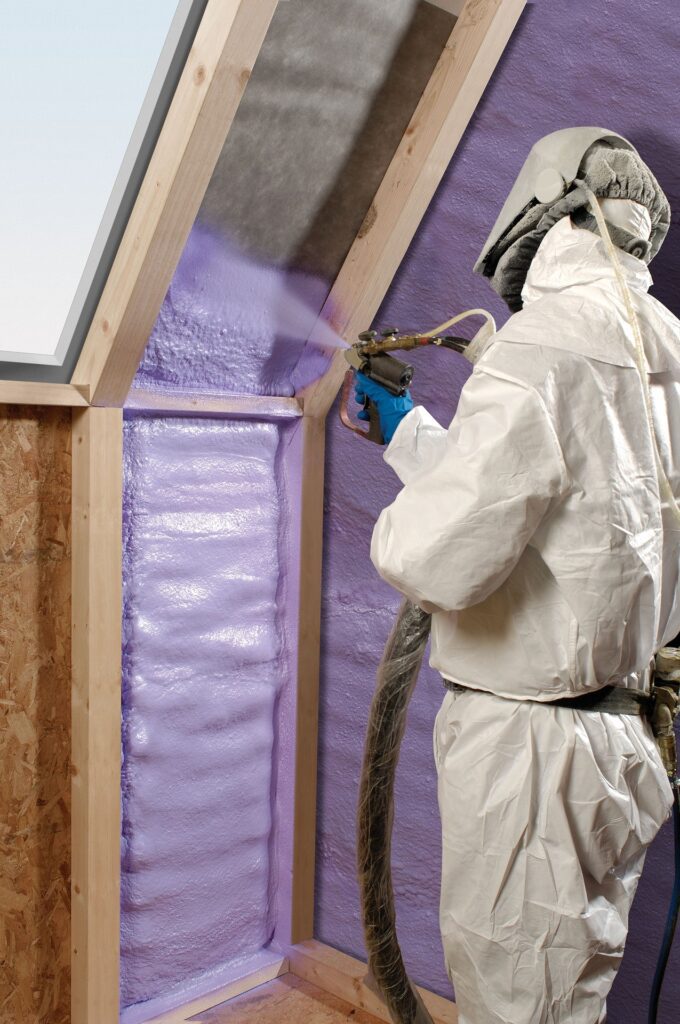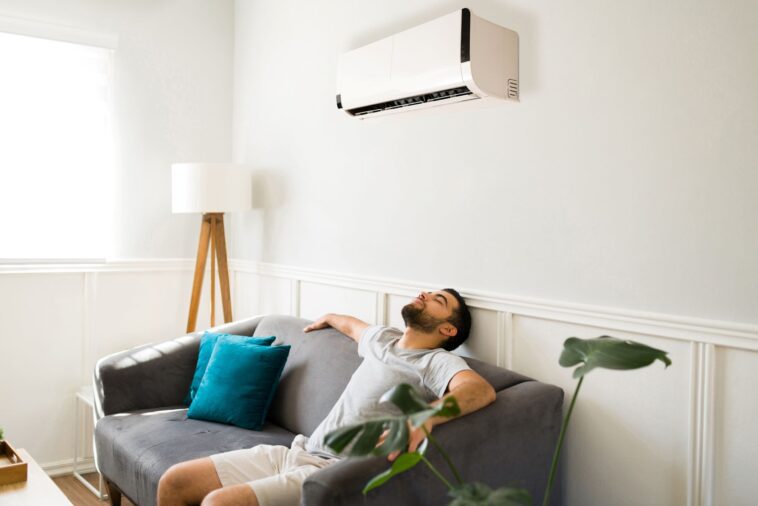Summertime: a season synonymous with long, hot, balmy days and all the joys they bring. As the sun’s heat begins to grace us with its presence, it’s time to ensure our homes are equipped and ready to offer a cool, refreshing retreat.
To enjoy the summer season, it’s vital to prepare your home in advance to keep those hot days outside and cool comfort inside. A well-prepared home can help ward off the blistering heat, keeping your living space cool and comfortable.
This article offers tips to help you prepare your home for the summer months, ensuring you stay relaxed and comfortable throughout the season.
Understanding Your Air Conditioning System
Air conditioning (AC) units are essential during summer. They can make your home feel like a refreshing oasis amidst a desert. But how often do you peek under its hood? For instance, did you know about the frozen evaporator coil in your air conditioning unit?
The evaporator coil is a crucial component of your AC that contains the refrigerant absorbing heat from your home. When it freezes or gets covered in ice, it can no longer absorb heat effectively, causing your system to work less efficiently.
But don’t worry; with the right tools and proper knowledge, you’ll be able to fix a frozen evaporator coil with no fuss. But if you find the process difficult, ask AC repair experts for advice on maintaining your evaporator coil. Or, better yet, let them do the job.
Making Your Home Energy Efficient
Increased AC usage during summer can lead to high electricity bills. However, there are ways to make your home energy efficient under the scorching heat of summer.
- Invest In Insulation: Proper insulation is the key to a relaxing home. It keeps the cool air from your AC from escaping, reducing the need to crank up the system. Insulation can be done in the walls, attic, and windows for optimal energy efficiency.
- Opt For LED Lights: Traditional light bulbs emit a lot of heat and consume more energy. By switching to LED lights, not only you’ll use less energy, but you’ll also reduce the unnecessary heat inside your home.
- Seal Windows And Doors: Any gaps or leaks in windows and doors can let the cool air out, making your AC work harder. Ensuring they are well-sealed can help retain the cool air inside your home.
Making your home energy efficient doesn’t just save money. It also contributes to a more sustainable environment by reducing energy consumption.
A Deep Dive Into Home Insulation
No one really thinks about insulation unless they’re building or remodeling a house and they need to decide which insulation is best for their needs. While the type of insulation materials you use depends greatly on your climate, project size, budget, and whether you’re doing it yourself or having a professional install it, there are definite pros and cons to each type, as the experts at Bernardi Building Supply illustrate here.
Fiberglass Insulation
Fiberglass insulation is the most common type of insulation found inside houses. It is made up of extremely fine glass fibers that can cut you if you aren’t careful. You can purchase it in rolls, rigid boards, or as loose fill and there is specialized insulation for ducts. The benefits of fiberglass insulation include:
- Affordability – it is generally the most cost-effective type of insulation for homes
- Precut pieces – it is designed to fit most standard construction measurements, making it easy to install without a lot of additional trimming
- Heat transferability – It works excellent for keeping heat in or out of houses
- Easy to install – It can be installed fairly easily by DIYers as long as they have some basic knowledge of how to handle it
- Quick installation – it is particularly quick to install when it’s done by professionals, but even homeowners can usually get it in more quickly than some other options
- Fire resistance – it keeps your house safer than some other options
- Minimal compression – it does not compress much, which means it doesn’t lose its effectiveness over the years.
The drawbacks to fiberglass insulation include:
- Dangerous or hazardous – it can irritate the skin and eyes and cause breathing problems if mishandled
- Lower effectiveness in extremely cold climates – it has a fairly low R-value, which is how well the insulation keeps heat from leaving or entering the structure.
- Walls may need to be removed to install
- Requires extra attention around wires and piping because it doesn’t conform to odd shapes very well.
- If it is not installed well, performance will suffer (i.e. rips, holes, and gaps reduce the effectiveness of the insulation).
Spray Foam Insulation
Many homeowners prefer spray foam insulation because their house doesn’t have to undergo major construction to have it installed. It can be sprayed directly into small spaces so if you have an issue with one room being too cold, spray foam can be a quick solution. Spray foam is a chemical-based mixture that you mix and apply with a specialized sprayer. The pros of using spray foam include:
- Heat transferability – It gets a high rating for heat transfer, which is great for colder climates. This is particularly true for closed cell spray foam, which has a higher R-value than open cell spray foam. Open cell spray foam insulation is on par with fiberglass insulation
- Provides an excellent barrier against moisture
- Mold resistance – It repels moisture, which mold likes for growth
- Insect resistance – You won’t have to worry about an insect infestation in your walls
- Works well in both new and old homes
- Perfect for sealing small spaces
- Small particles conform to odd shapes, making it a better option around pipes and wires
- Can fill walls with spray foam to any depth
- Can be applied to any surface no matter the location
- Reduces sound transmission and is an excellent choice for rooms that need to be soundproof
Of course, there are also cons to spray foam insulation, which are:
- Expense – Spray foam is significantly more expensive than other options
- Requires specialty tools – a specialty sprayer is required to apply spray foam insulation, which can cost a significant amount of money to purchase or rent
- Difficult to install – Most homeowners have to hire a professional to install spray foam insulation to make sure it’s done correctly
- Open cell spray foam can trap moisture, which can lead to mold growth
- Messy to install and will leak through unsealed joints and other openings
- Installation produces toxic gasses, so protective equipment is required to install spray foam insulation

Cellulose Insulation
Homeowners who are concerned with the eco-friendliness of their home often choose cellulose insulation because it is derived from plant sources. It is a thick and dense material that is usually fairly cost effective. Other benefits of cellulose insulation include:
- Settles well into small spaces and around obstructions
- Easy to install without tearing down walls
- Insect repellant
- Reusable – Some spray foams can be reused by collecting it with a vacuum and relocating the insulation with a sprayer
- Can fill walls to with cellulose to any depth
- Least expensive fiberglass option
Cons of using cellulose insulation include:
- Can pack down over time and cause gaps that cold air can get into
- If it gets wet, it takes a long time to dry
- Is not mold resistant
- Is not insect resistant
- Heavier than fiberglass – some cellulose spray foam may be too heavy for certain ceiling structures
Rigid Foam Insulation
This type of insulation has the performance of spray foam insulation and the easy installation of fiberglass insulation. Depending on the thickness of the foam board that you purchase, you can get R-values that equal that of closed cell spray foam insulation. Here are other pros of rigid foam insulation:
- Blocks thermal conduction through structural components, which means less heat gets into or out of the structure. This is the only insulation that does this
- No special equipment is required for installation
- Less expensive than spray foam insulation
- Moisture resistant
- Can withstand exterior exposure. This is the only insulation that can do this
Drawbacks to rigid foam insulation are few, but they include:
- More expensive than fiberglass insulation
- Must cut rigid foam to fit around pipes and structural elements, which requires the sealing of cuts and joints to ensure an air-tight enclosure
- Cannot be used for structural components and must be covered with drywall in living spaces
Polyurethane Insulation
Polyurethane insulation has grown increasingly popular among homeowners over the last few decades, and it’s easy to see why. With these low-maintenance insulation systems, you can achieve both better energy efficiency and higher soundproofing than traditional fiberglass options. So why would you consider polyurethane insulation in house walls? Here are a few of the many benefits that polyurethane insulation provides:
1. Ease of Installation
Polyurethane insulation is much lighter than fiberglass insulation, which makes it easier to install. It also comes pre-cut, so you won’t have to spend a lot of time measuring and cutting sheets for installation. If you plan to hire professionals for your installation project, don’t worry about increased costs due to added labor expenses. The lightweight material means fewer workers are needed to complete your project, which brings down costs.
2. Durability
If you need insulation that will last a lifetime, you can’t go wrong with polyurethane insulation. These systems are designed to remain intact for decades and even centuries. Since polyurethane is an inert product, it won’t corrode or degrade from heat or moisture exposure like some other types of insulation materials might. And because polyurethane doesn’t contain combustible fibers, there’s no risk of catching on fire like other types of insulation. This means you won’t have to worry about replacing your polyurethane insulation system as often as you would if you had used other insulation options in your home.
3. Cost Efficiency
Some homeowners are concerned about higher upfront costs for polyurethane insulation. However, when you consider how much you’ll save on energy bills over time, it’s clear that polyurethane is a more cost-efficient choice. And when you factor in long-term durability and reduced need for maintenance, you’ll see that polyurethane saves homeowners money down the road. Just ensure that the company you hire uses professional polyurethane machines, which means you get an efficient and accurate installation.
4. Ease of Maintenance
Polyurethane insulation is a great choice for homeowners who don’t have a lot of time for house projects. The lightweight material doesn’t need to be regularly touched up like other insulation types. This means you can just leave it installed without worrying about keeping it intact.
5. Resistant to Mold and Mildew Growth
If you live in an area prone to high humidity, polyurethane insulation can help keep your home from developing unsightly mold and mildew growth on its surfaces. Since it’s impermeable, moisture won’t be able to travel through and pool against walls or ceilings. This means you’ll have a more comfortable home without exposure to harmful allergens or toxins. You’ll also be able to avoid the embarrassment of having black spots all over your ceiling from excessive moisture.
Polyurethane insulation is a one-of-a-kind product that offers numerous benefits to homeowners. From the ease of installation and greater comfort to lasting durability and lower maintenance requirements, this type of insulation offers something for everyone. If you’re considering adding new insulation to your home but aren’t sure what type would work best for you, consult a professional today.
Optimizing Your Home’s Ventilation
When it comes to keeping your home cool, proper ventilation is the key. It’s not just about letting fresh air in—it’s also about letting hot air out. The following steps can help you achieve a well-ventilated home:
- Clean Vents: Dust and debris can clog them over time, reducing their efficiency. A quick vent clean-up can help your air conditioning unit run smoothly.
- Use Doors And Windows: Open your windows and doors on cooler days or evenings and let the breeze in. This can help cool down your home without cranking up the AC.
- Install Exhaust Fans: Installing exhaust fans can help push out the hot air trapped inside. This helps reduce the overall temperature of your home.
- Use Ceiling Fans: These are responsible for creating a wind-chill effect inside your home, making your space feel cooler. Plus, they consume much less energy than ACs.
Remember, your goal is to create a continuous airflow throughout your home. So don’t be afraid to mix and match these strategies until you find the combo that keeps your dwelling cool and your energy bills low.

Embracing Natural Shade And Coolness
Mother Nature can help keep your home cooler in the upcoming summer months. So, why not harness the power of natural shade to beat the heat? Here’s how you can do it:
- Plant Trees: Consider planting trees, particularly on the south and west sides of your house. They not only add beauty to your landscape but also provide natural shade. In a few years, these trees will grow to block the sun’s rays from heating your home.
- Invest In Vines: Fast-growing vines, like ivy and Virginia creepers, can be a great addition to your exterior walls. They can provide a green cover, acting as natural insulators against heat.
- Blinds And Shades: Blinds and shades can be an excellent option to block out the sun and keep your rooms cool. Opt for ones with reflective surfaces on the side facing the window.
By embracing shade and coolness, you can be proactive in keeping your home cooler, making those scorching summer months more bearable.
The Takeaway
Preparing your home for the hot summer months doesn’t need to be a challenging task. By understanding your ACs, making your home energy efficient, and embracing natural shade, you can ensure that your home remains a comfortable and inviting space throughout summer.
So, why wait for the heat to overwhelm you? Start implementing these strategies now and enjoy a cool, comfortable home this summer.




